PlanPhilly Postcard – San Francisco!
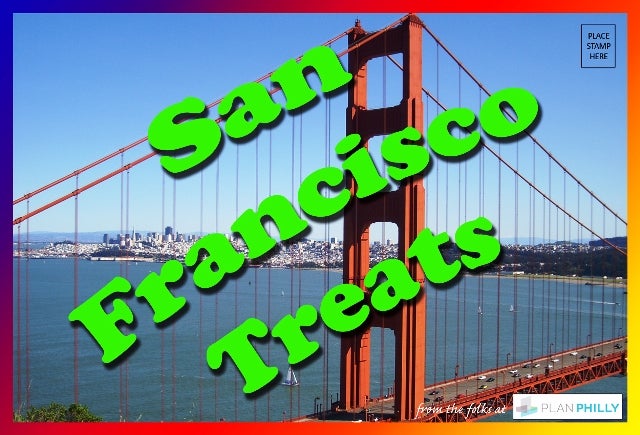
May 20
By Matt Blanchard
For PlanPhilly
The first person I met on the San Francisco waterfront was a fellow named Rob. Originally from Delaware County, now a homeless wanderer, he knew public spaces on both coasts. He told me exactly what I didn’t want to hear:
“Philadelphia will never be as nice as San Francisco. Don’t even try.”
No doubt Rob’s pessimism has served him well. But I had come to San Francisco, probably the most visited urban waterfront in America, not to worship its robust tourism and high-rent development, but to demystify them, to debunk, and to steal ideas.
Yes, I found the city of Rice-a-Roni blessed with certain unique advantages: a perfect climate, a super-rich population, and looming across the water, the rugged and scenic hills of the Marin Headlands (whereas we in Philadelphia have winter, relative poverty, and views of Camden).
But on my six-hour waterfront trek I was heartened by similarities between our two coastlines. For each landmark, I sought a lesson for use here at home. I found that much of their success is the result of planning, not divine grace, and I left San Francisco hopeful that one day, if we play our cards right, men like Rob might flock back home and say disparaging things about California.
Click a category to jump down the page:
• Historic Buildings
• Public Art
• Transit
• Ball Parks
• Bridges
• Piers
• Development
• Parks
• Tourism
• Shopping
HISTORIC BUILDINGS
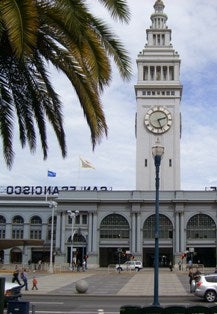
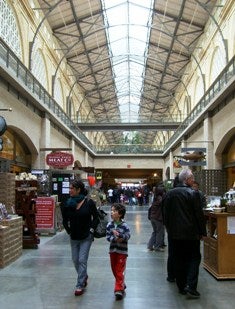
FRISCO LANDMARK: The Ferry Building
Too often grand old historic structures look great on the outside but are dead on the inside, stuffed with a boring museum or dying market. Not so in San Francisco, where the 1896 Ferry Building serves to anchor the waterfront redevelopment area where a highway once ran. It’s a grade A symbol for the area, stuffed with fine restaurants, a wine bar, a tea house, and at least two stores specializing in olive oil. It works brilliantly here because thousands of hungry San Franciscans work in the downtown office district, which is just across Embarcadero Blvd. Would such a development work in Philadelphia, whose office core is remote from the waterfront? Not a chance. What, then, can be learned?
PHILLY LESSON: Save the PECO Power Station now. Because its location is distant from downtown, this rusting, hulking 1920s power plant next to Penn Treaty Park may never be a gourmet market. It may not end up a museum to the work of Alexander Calder, as activist Hilary Regan has proposed. And it may sit empty for another 40 years before we figure out what to do with it. But by god the city must preserve it: Slap some paint on those corroding smokestacks. Fix the concrete spawling that’s exposed the rebar. The example of San Francisco, and that of London, Paris and New York, teaches us that romance has a role to play in urban redevelopment, and the mighty Peco Plant has romance in spades.
_____________________________________________
PUBLIC ART
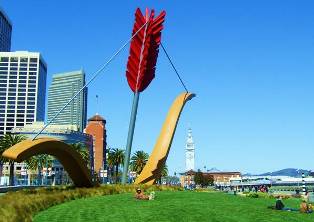
FRISCO LANDMARK: Cupid’s Span
Claes Oldenburg gave Philadelphia a big bronze clothespin and giant button, but his 2002 “Cupid’s Span” (with Coosje van Bruggen) works for San Francisco on a whole different level – and urban planning level. Put simply, it’s highly visible and completely kooky, the perfect gismo to keep people moving along the waterfront promenade. While our button and clothespin are fine places to meet, they’re easy to miss. Cupid’s Span drew me in from 8 blocks away, pulling me through a dead zone on the esplanade. Like a lot of tourists, I was frankly looking for something, anything to go and see. And when I reached it I felt happy for no good reason. Good art? Maybe. Good planning? Oh yes!
PHILLY LESSON: Think Bigger than “Percent for Art” Compare Cupid’s Span to Magdalena Abramowitz’s “Open-Air Aquarium,” a collection of 30 stainless steel fish-like shapes up on poles (below), a product of Philly’s “One Percent for Art” program on Penn’s Landing. Abramowitz is a fine artist and Percent for Art is a noble program. But ask yourself: How far would I walk to see this? Perhaps it’s time we lumped all these percentages into one big, place-defining, tourist-attracting blockbuster piece of public art?
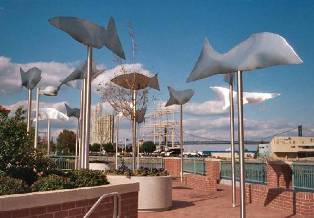
_____________________________________________
TRANSIT
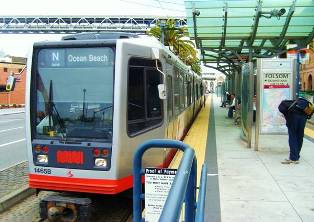
FRISCO LANDMARK: The MUNI Embarcadero Line
Running right down the middle of Embarcadero Blvd, three MUNI lines (N, T & F) link the AT&T ballpark to downtown and to ferries, museums, the Fisherman’s Wharf tourist mecca, and half-a-dozen neighborhoods. It’s good for development: The GAP happens to have located its world headquarters in a new building on this line. And it’s fun to ride: Passengers wait on platforms safely raised above the traffic. PHILLY LESSON: Beg, Borrow and Steal for a Riverfront Line
PATCO this month unveiled $700 million plans to build a MUNI-style system along the Delaware riverfront, from Fishtown down to the Ikea in South Philly. It’s a major chance to stimulate exactly the kind of “transit oriented development” Philly needs – maybe creating a whole new neighborhood in South Philly. See the plans at: www.patcopaexpansion.com. But the project is going to need champions. In the fierce competition for federal funding, the project faces major chicken-and-egg problems: How do you guarantee ridership for a line whose strategic purpose is to stimulate development and thereby create future riders? As PATCO’s Cheryl Spicer told PlanPhilly, “I think that it would have to be a very compelling case…It would need a lot of local support.”
_____________________________________________
BALLPARKS
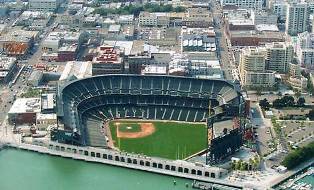
FRISCO LANDMARK: AT&T Park (formerly Pac Bell)
Take a hard look at the photo above: There are 41,000 seats but no horrible sea of parking! Careful transit planning back before the park’s opening in 2000 led to only 50% -58% of fans driving in. Yes, it’s too late for all that in Philadelphia, but there is a lesson to be learned. PHILLY LESSON: Extend riverfront transit down to ballparks.
AT&T Park is linked to the rest of the waterfront by a highly-visible and fun-to-ride light rail line, creating synergy with attractions up the coast. Though not on the river, Philadelphia’s ballparks can play the same role. PATCO’s plans for a $700 million riverfront rail line run as far south as Pier 70, but include a possible extension to the Navy Yard and our ballparks at Broad & Pattison. See the plans at: www.patcopaexpansion.com
_____________________________________________
BRIDGES
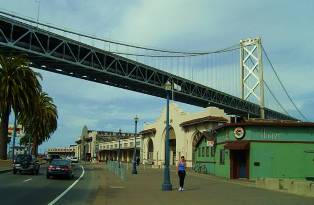
FRISCO LANDMARK: The Boring Bay Bridge
While the Golden Gate rightfully gets all the attention, it’s in a wooded area miles from downtown. The only real city bridge here is the San Francisco-Oakland Bay Bridge, an 8-mile multi-span bridge that lands just south of the office core in an area called Rincon Hill. Completed in 1936, it soars above the Embarcadero in precisely the same majestic way that our Ben Franklin Bridge overtops Delaware Ave…. Except that ours is nicer.
PHILLY LESSON: Celebrate the Ben
There’s not much we need to do with the Ben, other than love it, and perhaps open up the ornate “lost train station” inside the abutment. Regardless, it’s is one thing we’ve got on San Francisco. While the Bay Bridge is more than four times as long, it falls far short on charm, with a drab gray superstructure and naked concrete abutments. The Ben, finished just 10 years earlier, mixes ornate Beaux Arts stonework with American structural steel. Plus, it’s blue. When one thinks of the sub-par condo projects proposed for its immediate area, you can almost imagine creating stricter design controls to respect the genius of Paul Philippe Cret.
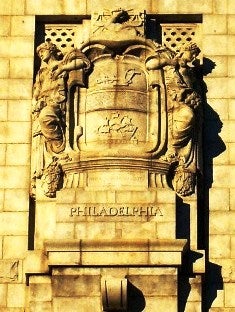
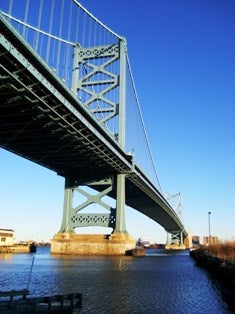
____________________________________________
PIERS
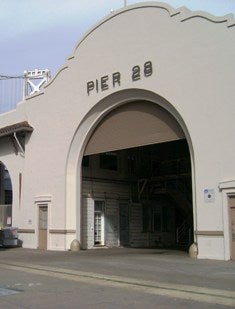
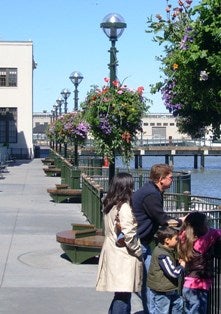
FRISCO LANDMARK: Historic Embarcadero Piers
In 1990, alarmed by a spate of proposals for high-rise hotels on piers, San Francisco residents passed Proposition H, a moratorium on waterfront construction. Then they spent the next seven years planning the future of their waterfront. Because of this effort, San Francisco has capitalized on a great stock of historic pier sheds: Some house restaurants, others host light industry, and one will soon become the new home of the Exploratorium, Frisco’s answer to our Franklin Institute. Some piers allow pedestrians to penetrate the street wall and wander out to the pier’s end. But everywhere a restriction on tall buildings on piers preserves the open port feeling and views of the bay and city.
PHILLY LESSON: Keep piers low, historic and public.
Philly’s surviving historic pier sheds are generally larger, fewer in number, and spaced farther apart. But as in San Francisco, they present a wonderful redevelopment opportunity. While our politicians balk at the word moratorium, Philadelphia might take a page from Frisco and start to consider the piers a historic landscape, restricting the development of modern towers (like the ungainly “Dockside” condos near Penn’s Landing) to the landward side of Delaware/Columbus Blvd. Keeping towers off the piers will preserve the open feeling and valuable views of the historic waterfront.
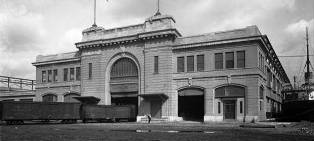
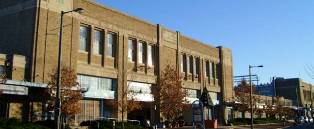
____________________________________________
DEVELOPMENT
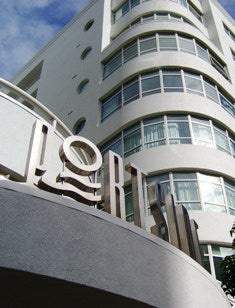
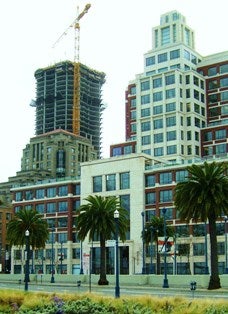
FRISCO LANDMARKS: SOMA, South Beach and Rincon Hill
The last decade has seen dozens of new residential and commercial buildings go up in three neighborhoods that touch the waterfront: SOMA (South of Market), South Beach, and Rincon Hill. Some of this success is due to dogged planning by the city, which laid the groundwork for 2,500 new housing units starting in 1981. Some of it is due to San Francisco’s magical real estate market, which vies with New York for most expensive major city. And some part of it is due to the improvement of public space along the Embarcadero. The photo at right shows the new Gap World Headquarters, which faces Rincon Park, which the company helped to fund. The lesson is clear: Public investment in esplanade amenities helped spark private investment not only in new buildings, but in new amenities.
PHILLY LESSON: Isn’t it obvious? Plan hard, invest in strategic amenities, and pray for another real estate boom.
_____________________________________________
PARKS

FRISCO LANDMARK: Rincon Park Restaurants
Maybe it was a risk to let a giant bow-and-arrow dominate half of the new 2.5-acre Rincon Park. But San Franciscans took a second risk, giving over the other half to two privately-developed restaurants by restaurateur Pat Kuleto and JMA Ventures (whose photos are above). Was it a commercial usurpation of precious public space? Maybe so. But the move may also be a recognition that waterfront parks, however nice the view, are still edge spaces, places on the way to nowhere in particular, and it takes extra effort to keep them active. The two upscale restaurants, Water Bar and Epic, could help bring nightlife to the Embarcadero, or at least make Rincon Park safe when the office workers go home. PHILLY LESSON: Parks are not just space. They’re action.
As a city, we again face the challenge of making good parks. The PennPraxis plan for the Delaware Riverfront calls for sizeable new parks from South Philly to Port Richmond. Already existing parks will also see their environment change as buildings rise along the river. Yet there are signs that mistakes are already being made: A condo tower called Penn Treaty Tower is slated for a lot just south of a beloved community park. Yet developer Steve Labov chose to face that park with the broad flank of his parking garage. As Rittenhouse Square teaches, parks are made by what happens around them. And as San Franciscans know, even a park with glorious river views will suffer from blank surroundings.
__________________________________________
TOURISM
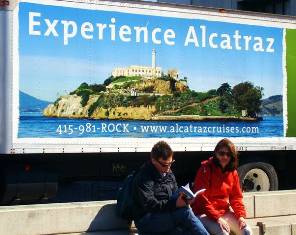
FRISCO LANDMARK: Alcatraz, a.k.a. The Rock
Alcatraz was “The Rock” before that nice actor came along, and it seems like the ultimate blockbuster tourist destination. Rich with history and drama, it has the added benefit of being on a scenic island. Yes, Alcatraz is the big leagues, drawing 1.3 million visitors each year, a stony reminder of just what it takes to be a major tourist waterfront.
PHILLY LESSON: Maybe we should go with housing…
There’s almost no chance Philadelphia will find such an attraction, unless we load Holmesburg Prison onto a barge. But it does give one ideas: How about sinking a dozen obsolete warships off Petty’s Island and giving scuba tours? How about high-speed ferry service from Penn’s Landing to a spruced-up Fort Mifflin? How about re-creating the legendary “Floating Church” of the 1800s and giving Sunday services? After all, 1.3 million visitors isn’t so much more than the Philadelphia Art Museum (about 1 million) or the Philadelphia Zoo (below 1 million).
But on the tourist front, maybe Rob was right. San Francisco’s waterfront has nationally-known destinations to spare: The Golden Gate, the Presidio, Fisherman’s Wharf. Even if people don’t actually go to Alcatraz, they come to San Francisco to at least say they saw it. Unless they relocate the Liberty Bell, the Delaware Riverfront has nothing like it.
_____________________________________________
SHOPPING

FRISCO LANDMARK: Fisherman’s Wharf and Pier 39
Native San Franciscans probably hate the four piers devoted to shopping on the northwestern end of the waterfront, but some 80% of all tourists visiting San Francisco end up here, buying t-shirts and trinkets and providing paychecks for more than 30,000 people who work in the area. Recent years have seen major chains move in, nicer hotels spring up, and an aquarium come to join the wax museum. What was San Francisco’s South Street has in parts taken on the air of an outlet mall. By many measures it’s the most important site on the waterfront.
PHILLY LESSON: Shopping Matters
Native Philadelphians of a certain class so hate South Street that there’s little chance of extending its vibrant mix to whatever becomes of Penn’s Landing. And our windy winters would seem to preclude a shopping village out on some Delaware River pier. Yet there is a lesson in Fisherman’s Wharf: Shopping matters. While few planners have the guts to pencil major retail chains into a riverfront plan, you might say South Philadelphia already has a strong retail base that’s worth building on. It stretches from our Walmart-on-the-water to Ikea, Target, Foreman Mills and a dozen other stores farther inland. Like it or not, we’ve already got a major retail destination on the river. Can it be transformed?
_______________________________________________________
Contact the reporter at blanchard.matt@gmail.com
WHYY is your source for fact-based, in-depth journalism and information. As a nonprofit organization, we rely on financial support from readers like you. Please give today.



